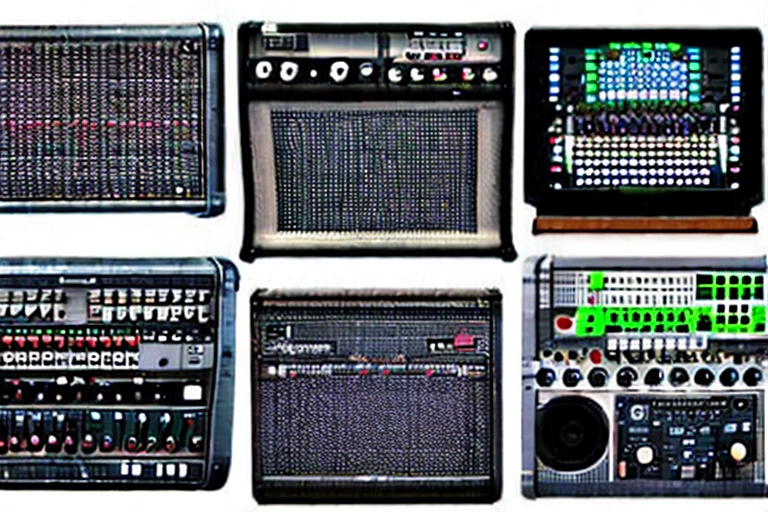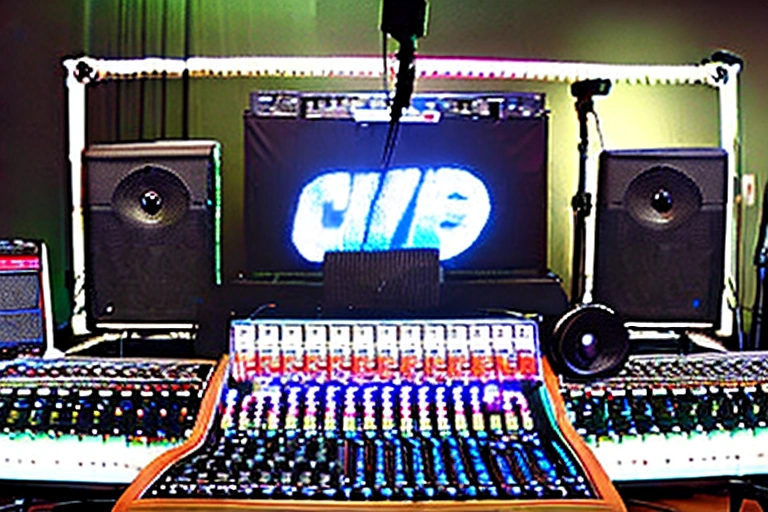Are you hosting an event and want to ensure that your guests have an amazing experience? Looking for tips and tricks to help you get the best live sound possible? Look no further! In this blog post, we’ll share our secrets to getting a good live sound at your next event. Keep reading to learn the key steps for creating a memorable experience with perfect sound.
- Creating a Suitable Venue
- Utilizing Quality Audio Equipment
- Choosing the Right Microphones
- Optimizing Room Acoustics
- Adding Effects to Enhance Live Sound
- Adjusting Your Monitors for a Clear Mix
- Properly Positioning Speakers and Gear
- Working With Professional Technicians and Engineers
- Testing Your System Before Your Event Day 10

Creating a Suitable Venue
Creating a Suitable Venue for Your Next Event
When planning your next event, it is important to consider the sound and lighting options available to you. A good live sound system can make your event more enjoyable for attendees, while a poor sound system can ruin the experience for everyone. Here are some tips on choosing the right venue and sound system for your event:
When choosing a venue, it is important to consider the size and layout of the space. If your event is large or has a lot of movement, you may want to look for a larger venue that can accommodate the crowd. On the other hand, if your event is smaller or has less movement, you may want to look for a smaller venue that can provide better sound quality.
When choosing a sound system, it is important to consider the type of event you are hosting. If your event is a concert or performance, you will likely want to choose a professional sound system. On the other hand, if your event is a lecture or discussion, you may want to choose a less expensive system that will still provide good sound quality.
Finally, it is important to consider the type of audience you are expecting at your event. If your event is geared towards children or adults who are not familiar with music or audio equipment, you may want to choose a venue that has child-friendly sound systems. Conversely, if your event is geared towards music lovers who are familiar with audio equipment, you may want to choose a venue with high-quality audio systems.
Utilizing Quality Audio Equipment
Audio equipment is an important part of any live sound setup and can make or break a performance. Here are a few tips to help you get the best sound possible:
-
Choose the right equipment. Your audio setup will depend on the type of event you’re hosting, so it’s important to research what will work best for your particular situation. If you’re planning a small gathering, a simple PA system will do the trick. If you’re hosting a large concert or festival, however, you’ll need to invest in quality audio equipment, including sound reinforcement systems (SRS), stage monitors, and audio cables.
-
Get the right mix. Once you’ve chosen your audio gear, it’s important to get the mix right. Too much bass or treble can ruin an otherwise good performance, so it’s important to have a professional engineer or mixer help you get a perfect balance.
-
Make sure your speakers are calibrated. Even the best-sounding audio system can be ruined if your speakers aren’t calibrated correctly. Bring in an expert to check your speakers before your event and make any necessary adjustments.
-
Use headphones wisely. While listening to music through headphones is often a personal preference, it can also impact how well your audience hears you. Make sure to use headphones sparingly so that everyone in attendance can hear you clearly.
-
Don’t rely on microphones alone. Even if your audio system is top-of-the-line, don’t rely on microphones alone to capture sound from the audience. A good microphone will only capture half of what’s happening in front of it – use other audio sources (such as stage monitors) to fill in the other half.
Choosing the Right Microphones
When it comes to choosing microphones for live sound, there are a few factors to consider. The type of sound that you’re looking to achieve will dictate which microphones are the best fit. For example, if you’re aiming for a bright and punchy acoustic sound, dynamic vocal mics like Shure SM57s or Sennheiser MD421s may be what you need.
On the other hand, if you want a more natural and warm-sounding audio performance with less distortion, then studio condenser microphones like the AKG C-K47 or Neumann KM184 might be better options. Additionally, finding a good match between the mic and preamp is essential; if your microphone picks up too much noise from your amp or guitar pickup, it will affect the quality of your recording.
Ultimately, one of the most important decisions when setting up live sound is picking the right type of microphone for the task at hand. By taking these into account along with other critical factors such as speaker placement and amplification choice, producers can create polished recordings that accurately reflect their artist’s performances
Optimizing Room Acoustics
Choose the Right Equipment
When choosing the right equipment for your event, it’s important to take into account the room’s acoustics. By optimizing the room acoustics, you can create a sound that is both comfortable and effective for your audience.
One of the most important factors to consider when optimizing room acoustics is the type of microphone you will be using. If you are using a dynamic microphone, make sure to place it close to the speaker so that the sound is clear and distortion-free. If you are using a condenser microphone, be sure to place it at a distance from the speaker so that the sound is not too muffled.
Another important factor to consider when optimizing room acoustics is the type of sound system you will be using. If you are using a portable sound system, make sure to place it in a location that is free from echo and sound distortion. If you are using a more traditional sound system, be sure to position it in a way that allows the audience to hear the entire stage.
Finally, it is important to take into account the size of your audience. If your audience is small, you may not need to use as much sound amplification. Conversely, if your audience is large, you may need to use more sound amplification to ensure that they can hear everything clearly.
By taking these factors into account, you can create a sound that is both comfortable and effective for your audience.
Understand Your Venue
When setting up your event, be sure to optimize the acoustics of your space. This will help create a good live sound experience for attendees.
To do this, first, understand your venue’s capabilities and how it was designed. You may need to make small adjustments or consider using acoustic treatment products. It is also important to pick the right microphones for your event and get adequate sound coverage. Remember that every person has their own hearing range, so test each microphone on a friend or family member before the event to be sure they’re getting an accurate sound mix.
Monitor Your Mix
Room acoustics are important for getting a good live sound. When choosing microphones, it is important to monitor the mix to make sure everything sounds balanced and clear. By optimizing room acoustics and monitoring your mix, you will be able to get a great live sound at your next event!
Troubleshoot Issues Quickly
Room acoustics can be a major factor in how well your event sounds. Here are a few tips to help optimize your room and get the best sound possible:
-
Choose the right microphones. When choosing microphones, make sure to consider the size of the room, the type of sound you want to capture, and the quality of the microphone. For smaller rooms, try using a lapel mic or a shotgun mic. For larger rooms, try using a condenser or dynamic mic.
-
Get good sound reinforcement. Sound reinforcement can make a big difference in how well your event sounds. Consider using speakers with good bass response, using acoustic foam to reduce echo, and using audio isolation panels to reduce noise from outside sources.
-
Troubleshoot issues quickly. If you experience any problems with your sound, don’t hesitate to contact your sound engineer or venue staff. They will be able to help you troubleshoot the issue and get the sound you need for your event.

Adding Effects to Enhance Live Sound
Adding effects to enhance live sound can make a big difference in how your audience perceives your performance. Whether you’re looking to add depth and realism to your vocals or create a more immersive experience for your listeners, there are a variety of effects options available.
Before you start tweaking any settings, it’s important to understand the basics of how audio effects work. Effects pedals typically have three main sections: input, output, and controls. The input section is where the effect receives its audio signal. The output section is where the effect sends its audio signal to the amplifier or PA system. The controls section allows you to adjust the effect’s settings.
When choosing an effect, it’s important to consider what you want it to do. Some effects are designed to enhance specific sounds, such as adding depth or realism to vocals or instruments. Other effects are designed to create a more immersive experience for listeners. Effects like reverb and delay can help create a sense of space and depth in your music, while distortion and fuzz can add texture and grit.
Once you’ve selected an effect, it’s time to tweak its settings. Effects pedals typically have a number of knobs or buttons that allow you to adjust the effect’s parameters. It’s important to experiment with different settings until you find ones that suit your needs.
Adding effects to your live sound can make a big difference in how your audience perceives your performance. Experiment with different settings until you find ones that suit your needs.

Adjusting Your Monitors for a Clear Mix
If you’re looking to get the best live sound possible, it’s important to make sure your monitors have adjusted accurately. By adjusting your monitoring setup, you can ensure that the sound coming from your speakers is as clear and crisp as possible. This will help produce a more accurate mix and ensure that everyone in attendance hears what they need to hear. Here are four tips for getting the most out of your monitors:
*Plan Ahead*
Before you even begin setting up your monitor system, it’s important to have an idea of where you want them positioned and what type of speaker configuration you’ll be using. This will allow you to find exactly the right monitor placement for each speaker and create an accurate signal path between them all.
Get Plenty of Monitors
Although having a clear mix is crucial, it’s not always possible or financially feasible to purchase top-of-the-line studio monitors. In fact, many small businesses and event organizers opt for less expensive home theatre-style monitors instead. While this may not provide the same level of clarityas professional studio monitors, it will do just fine for most applications.
Choose Your Settings Wisely
Once you’ve determined which kind of monitor arrangement works best for your situation, it’s time to start tweaking some settings on your audio hardware. Not all monitoring setups require equal amounts of adjustment; Depending on whether you’re using front or rear speakers, for example, different levels and types of adjustments may work better than others.
Adjusting Your Monitors For a Clear Mix: 4 Tips

Properly Positioning Speakers and Gear
If you’re looking to improve the sound at your next event, it’ll help to have a good understanding of where and how your speakers should be positioned. In order for the live sound system to provide an accurate and clear mix, careful placement is key.
Speakers can often be placed in a number of different locations in order to create the best possible listening experience for your audience. Try to think about where they will be situated in relation to both the stage area and any obstructions like walls or ceilings. You should also take into account which type of music you are playing – some songs are better heard via speakers placed closer to the listeners, while others may work better if they’re positioned further away.
Once you’ve determined where your speakers will go, make sure that they are plugged into an amp/speaker combo that has been properly EQ’d (adjusted) before turning them on.
Working With Professional Technicians and Engineers
When it comes to live sound, there are a few things that you can do to make sure that your event is as successful as possible. First and foremost, make sure that you have the proper positioning of your speakers and gear. Secondly, make sure that you have the right mix of equipment and sound quality. Finally, make sure that you have the help of a professional technician and engineer.
Testing Your System Before Your Event Day 10
Testing your system is important before the day of your event. By doing this, you can ensure that you are getting the best possible sound quality for your attendees.
First and foremost, it’s important to make sure that all of your audio equipment is in good working order. Make sure to test all of your microphones and mixing boards, as well as any cables connecting them. If there are any problems with these components, they may not be able to produce a good live sound.
Next, be sure to test all of your speakers and amplifiers. You want to make sure that they’re working properly by playing different types of music through them and checking their volume levels. If something does not sound right, it may be necessary to have it fixed before the event day begins.
Finally, always test audience noises, such as applause and talking at length in order to ensure maximum clarity from the speakers on stage. This will help reduce distractions for the performers and keep everyone engaged in the performance!
Having a good live sound is essential for any event. With these tips and tricks, you can make sure you get the most out of your sound system at your next performance or show. It’s important to create a suitable venue, utilize quality audio equipment, choose the right microphones and optimize room acoustics in order to get the best live sound possible.
By taking into account all aspects of getting good live sound from creating a well-suited venue to properly positioning speakers and gear, you’ll be ensuring that every audience member experiences great audio quality during your event. For more expert advice on achieving top-notch live sounds, check out our other content!


